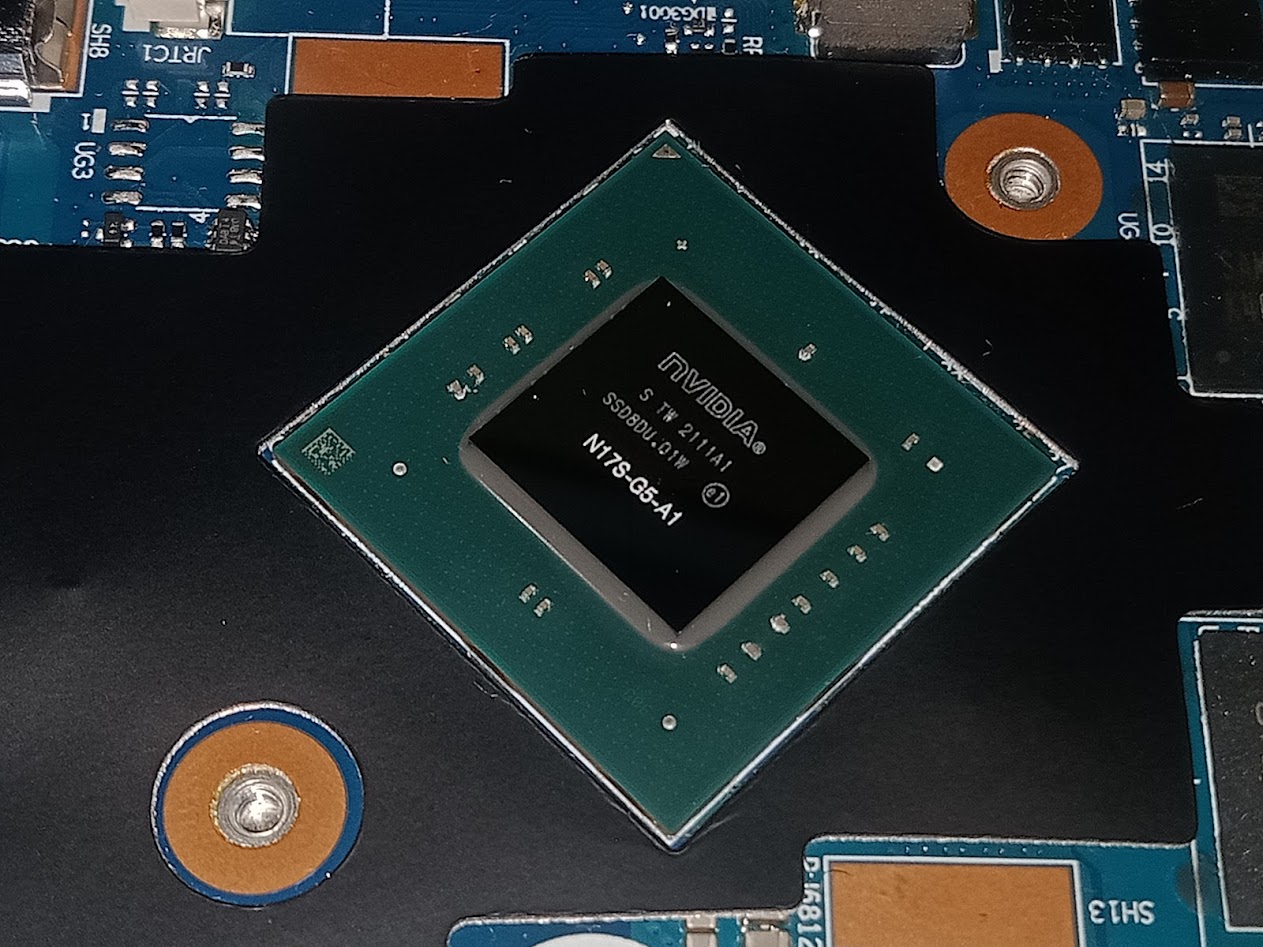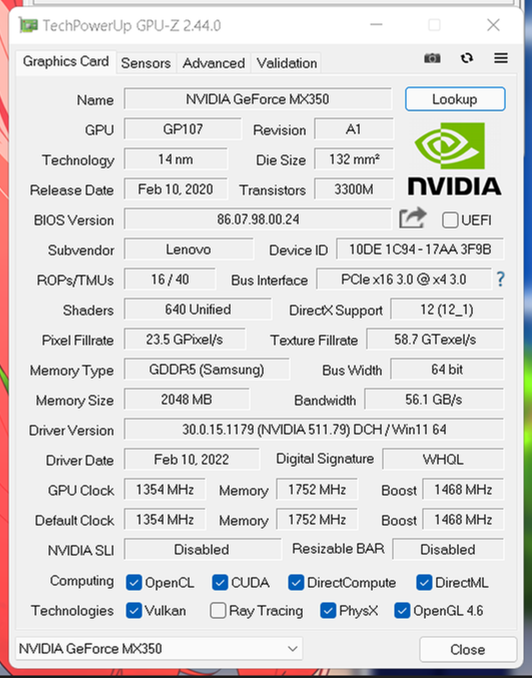Comparing: Sony Vaio 4GB / SMI USB DISK vs GeForce MX350 [Disk]
In this comparison, we analyze two Disks: Sony Vaio 4GB / SMI USB DISK and GeForce MX350 [Disk], using synthetic benchmark tests to evaluate their overall performance. This side-by-side comparison helps users understand which hardware delivers better value, speed, and efficiency based on standardized testing. Whether you're building a new system or upgrading an existing one, this benchmark-driven evaluation offers valuable insights to guide your decision.

Sony Vaio 4GB / SMI USB DISK
| Type: | Disks |
|---|---|
| Model: | Sony Vaio 4GB / SMI USB DISK |
| Capacity: | 4GB |
| Interface: | USB 2.0 |

GeForce MX350 [Disk]
| Type: | Disks |
|---|---|
| Model: | GeForce MX350 [Disk] |
| Capacity: | 2GB, 1.5GB |
| Interface: | GDDR5 |
Specification Comparison Table
This specification comparison presents technical details of several devices or components to help you understand the key differences between each option. Use this table as a reference to determine which device best suits your needs.
| Specification | Sony Vaio 4GB / SMI USB DISK | GeForce MX350 [Disk] |
|---|---|---|
| Brand | Sony / SMI | Samsung |
| Format | USB FlashDrive | VRAM Disk |
| Capacity | 4GB | 2GB, 1.5GB |
| Interface | USB 2.0 | GDDR5 |
Submission Comparison Table
This submission comparison table displays the number and details of benchmark data submissions from various devices or components. This information helps you understand the performance based on the benchmarks that have been tested, as well as providing an overview of the consistency and popularity of the available benchmark results.
| No. | Benchmark Software | Sony Vaio 4GB / SMI USB DISK | GeForce MX350 [Disk] |
|---|---|---|---|
| 1 | ATTO Disk Benchmark - 64M |
Read: 26.54 MB/s Write: 8.56 MB/s |
Read: 1440.00 MB/s Write: 1330.00 MB/s |
| 2 | CrystalDiskMark |
Read: 24.74 MB/s Write: 9.42 MB/s |
Read: 1113.58 MB/s Write: 995.48 MB/s |
Submission Comparison Chart
This chart visualizes the benchmark scores comparison between two hardware devices based on submitted data.
Media Gallery
A collection of photos of tested hardware. These images can help you identify the physical form, model, and variant of the hardware in question. These photos are from our own documentation, and if they are not available we may not be able to document them.
About Hardware Sony Vaio 4GB / SMI USB DISK
The Sony Vaio 4GB/SMI USB DISK is a small capacity 4GB flash drive, which is more commonly found in older devices or used for basic purposes such as storing small document files or important file systems. Despite the “Sony Vaio” name, this flash drive actually falls into the unbranded or OEM universal drive category, as there is no official manufacturer that clearly identifies this product.
This flash drive is known as a native capacity fake USB, which means that while it may physically resemble a large capacity, it actually only has 4GB of usable storage space. With such a significant capacity limitation compared to today's standards, this flash drive still has a role to play in specialized applications, such as a lightweight operating system installation media, recovery tool, or as a configuration file store.
Tests were conducted using a Lenovo IdeaPad Slim 3i 14ITL6 device, 12GB DDR4 Dual Channel RAM, Windows 11 22H2 operating system, and a USB 3.1 Gen 1 port. Based on tests with CrystalDiskMark, this flash drive recorded a read speed of 24.74 MB/s and a write speed of 9.42 MB/s, which is low but sufficient for basic use that does not require large amounts of data transfer.
Device Test:
Device: Lenovo IdeaPad Slim 3i 14ITL6
RAM: 12GB DDR4 3200MHz Dual Channel (8+4)
OS: Windows 11 22H2
USB: USB 3.1 Gen 1
Thursday, 16 October 2014 21:44:19 | Update: 1 month ago
About Hardware GeForce MX350 [Disk]
The NVIDIA GeForce MX350 is an entry-level GPU designed for thin and light laptops, delivering significant graphics performance improvements over the processor's built-in iGPU. The GPU is based on the Pascal architecture with 640 CUDA Cores, and features 2GB or 4GB of GDDR5 memory with 64-bit bus width. The MX350 is generally used for light graphics tasks such as photo editing, light video, and casual gaming, and provides GPU acceleration for CUDA-enabled creative applications.
But in this particular test, a portion of the video memory (VRAM) on the GeForce MX350 was configured as a VRAMDisk. The concept of a VRAMDisk is similar to a RAMDisk, but it uses the VRAM of the GPU as a super-fast storage medium. VRAMDisk allows the creation of temporary, high-speed drives that can be utilized for technical experiments, speed testing, or graphics caching in certain scenarios. Although its capacity is limited and volatile (data is lost on reboot), the high bandwidth and low latency of VRAM provide compelling performance in certain contexts.
The tests were conducted on a Lenovo IdeaPad Slim 3i 14ITL6 laptop with Intel Core i5-1135G7 processor, 12GB DDR4 3200MHz dual channel RAM, and Windows 11 22H2 operating system. The VRAMDisk was created from a 2GB GeForce MX350 GPU, with virtual disk sizes of 1GB and 1.5GB, using special software called GPU RAM Drive.
Benchmark results with CrystalDiskMark recorded read speeds of 1113.58 MB/s and write speeds of 995.48 MB/s, showing the high bandwidth potential of VRAM as a temporary storage medium. Although the performance does not match DDR4-based RAMDisks, VRAMDisks remain a unique and attractive solution for certain technical purposes, especially for users who want to utilize idle VRAM for fast I/O processes. With its dedicated laptop GPU form factor and PCIe x4 Gen 3.0 interface, the GeForce MX350 VRAMDisk opens up new exploration possibilities in the world of experimental graphics-based high-speed storage.
Device test (testbed):
Device: Lenovo IdeaPad Slim 3i 14ITL6
CPU: i5 1135G7
RAM: 12GB DDR4 3200MHz Dual Channel (8+4)
OS: Windows 11 22H2
Friday, 06 August 2021 04:34:19 | Update: 1 month ago


